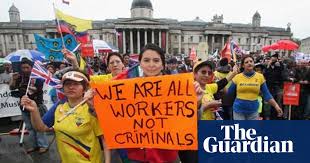There is so much now about UFO's in the news. I wonder what we all make of it? This is the info I can find. I really had not thought much about all this until the Congressional hearings were plastered everywhere. I began researching and, of course, fell down that "rabbit hole" quickly.
I say unbiased like that is possible. Every source I found has it's slant. Some believe in alien crafts, some do not. I tried to stick to the scientific papers because, although the scientists may or may not believe, they will not publish without some type of proof that can be reproduced.
Fortunately for me, there is plenty of information available. Below is a brief accounting of what I found:
Unidentified Flying Objects (UFOs) have been a topic of intrigue and debate for decades. From mysterious sightings in the sky to claims of extraterrestrial encounters, the subject of UFOs has captivated the imagination of many. In recent years, there has been a resurgence of interest in UFOs, fueled by new sightings, scientific investigations, and governmental disclosures.
There has been a rash of UFO sightings recently, both in the United States and around the world. In the United States, there have been several high-profile sightings, including one by two pilots who were flying over Arizona in late February. The pilots reported seeing a mysterious object that was flying erratically and at high speeds. The Federal Aviation Administration (FAA) is investigating the incident.
Historical Context
The term "UFO" was coined in the 1950s by the United States Air Force to describe any airborne object that could not be identified by the observer. Over the years, many UFO sightings have been explained as natural phenomena, atmospheric conditions, or man-made objects. However, a small percentage remains unexplained, leading to speculations about extraterrestrial life and advanced technologies.
Recent Sightings
In the past decade, there have been numerous reports of UFO sightings from pilots, military personnel, and civilians alike. Some of the most notable include:
1. The Nimitz Encounter (2004): US Navy pilots reported encountering a tic-tac shaped object off the coast of San Diego. The object exhibited flight characteristics beyond the capabilities of known human-made aircraft.
2. East Coast Sightings (2014-2015): Navy pilots reported multiple encounters with high-speed, unidentified aircraft along the East Coast of the US. These objects were captured on infrared cameras, showcasing their rapid movements and sudden stops.
There are other countries reporting similar sightings. In fact, the UK has a long history of UFO sightings and has released many of its own reports on the subject. Other countries such as Canada and France have also released their own reports on UFO sightings. In some cases, the objects have been seen by multiple people and have been captured on video or radar.Scientific Perspective
While the idea of extraterrestrial life is fascinating, the scientific community approaches UFO sightings with skepticism and a demand for empirical evidence. Most scientists argue that while life might exist elsewhere in the universe, the evidence for UFOs as extraterrestrial vehicles is inconclusive.
There are many theories on what these sightings could be. Historically, research into UAPs has been relegated to the space of conspiracy theories, with scientists dismissing evidence as unreliable sightings made by eccentric hobbyists1. However, the US National Intelligence office is now aware of 510 reported sightings, an increase over the 144 compiled in the spy agency’s first 2021 assessment2. Nearly half of the new sightings were deemed “unremarkable” and attributed to human origins, according to the report1. However, more than 100 of the encounters remain unexplained1.
Many sightings can be explained by:
- - Atmospheric phenomena like lenticular clouds or ball lightning.
- - Man-made objects such as drones, satellites, or experimental aircraft.
- - Optical illusions or misinterpretations of known objects.
However, the unexplained sightings have prompted some scientists to call for more systematic research into the phenomenon.
Congressional Hearings and Governmental Disclosures
The US government's interest in UFOs is not new. Projects like Blue Book in the 1950s and 1960s aimed to investigate UFO sightings. However, recent revelations have brought the topic back into the limelight.
In 2020, the Pentagon officially released three videos captured by Navy pilots, acknowledging the unidentified nature of the objects. This release spurred further interest and led to congressional hearings on the matter.
The Pentagon has also acknowledged that it is investigating UAPs. In 2021, the Department of Defense established the Unidentified Aerial Phenomena Task Force to investigate these sightings.
In these hearings, officials and experts discussed the potential threats posed by unidentified aerial phenomena, especially if they represent advanced technology from foreign adversaries. While the hearings did not conclude the extraterrestrial origin of the sightings, they emphasized the need for further investigation and transparency.
Current Thought of the Population at Large
The recent rash of UFO sightings has renewed interest in the possibility of extraterrestrial life. Some people believe that the objects are alien spacecraft, while others believe that they are natural phenomena or hoaxes.
The recent rash of UFO sightings and the US government's more open stance on the issue have led to renewed speculation about the possibility of extraterrestrial life. However, there is no definitive evidence to support the claim that UFOs are alien spacecraft. More research is needed to determine the true nature of these objects.
The topic of UFOs remains as enigmatic as ever. While many sightings can be explained through natural or man-made phenomena, a small percentage continues to baffle experts. As technology advances and our understanding of the universe expands, perhaps one day we will have a clearer picture of these unidentified flying objects. Until then, the skies will continue to be a source of wonder and mystery.
Resources:
- https://www.nbcnews.com/ufos-aerial-phenomena
- https://www.npr.org/2023/07/27/1190390376/ufo-hearing-non-human-biologics-uaps
- https://youtu.be/YCo2bXYPmPY?si=fBLQCV06aDZ5SglM
- https://www.cnn.com/2023/01/12/politics/us-government-ufo-reports/index.html
- https://www.politico.com/tag/ufos
- https://youtu.be/Y7NrskX-BHs?si=ISBXx3iZT4Q5q-Nf



















